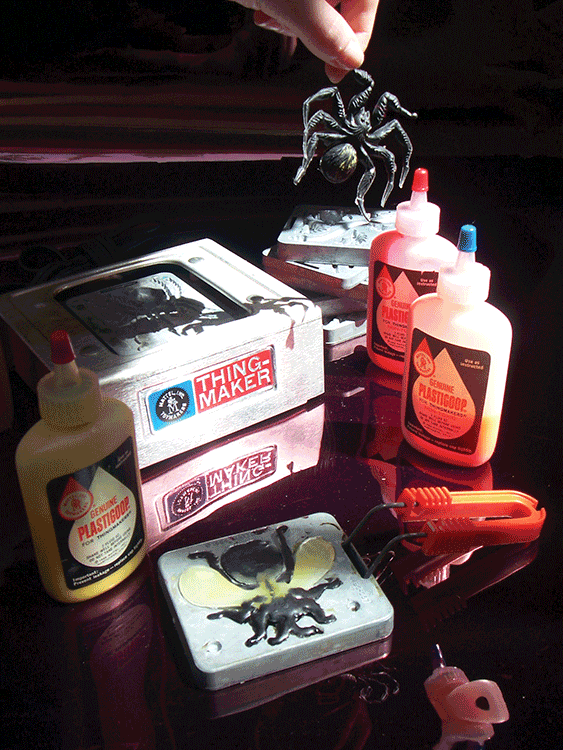Foreword
I feel very lucky to have been a little kid in the 1960s. The toys were fantastic!
Here are the ones that made a big impression on me:
- The View-Master and the reels of 3D artist Florence Thomas’s fairytale land dioramas, which gave me the feeling that I was peering into a magical universe just behind the stereo lenses of the plastic binocular-like viewing device. I treasured my View-Master, and any friend of mine who pulled down on the lever and let it snap back was forbidden from using it.
- The Air Blaster, made of a similar ominous black plastic as the View-Master. It looked like a pistol with a large funnel attached to the barrel. It shot air vortices that could knock over paper targets or blow out candles from across the room. The burst of air was so powerful that I’m sure it could have popped an eardrum if you placed it over someone’s ear and pulled the trigger. I never did that, but I did like to fill it with juniper berries and shoot them against our living room window, which made a lot of noise.

- Creepy Crawlers, which was one of the Thingmaker line of toys. This kit came with an A/C powered hotplate; metal molds of worms, spiders, snakes, and other scary bugs; and several squeeze bottles of a delightful-smelling liquid substance called Plastigoop that cured when exposed to heat. This kit kept my sister and me occupied for hours. It was fun to plan which colors of Plastigoop to use, and it was fun to use the tongs to set the mold on the hot plate, and it was fun to quench the mold in the cold water bath, and it was fun to peel the crawlers out of the molds (especially when you succeeded in doing it without pulling a spider’s leg off by mistake).
- The Show’N Tell, which played records and projected film strips on a simulated TV screen. I was thrilled by the “Dinosaurs” Picturesoundprogram, which played “Night on Bald Mountain” when they talked about the Tyrannosaurus Rex.
The thing I liked about these toys was that they occupied a sweet spot on a spectrum between complete lockdown and total open-endedness. They had a specific function that allowed for a wide variety of amusement. They offered just the right amount of guidance for a little kid but encouraged experimentation (or, in the case of the View-Master and the Show’N Tell, offered lots of different stories you could select “on demand” by grabbing a disc or reel from your toybox).
I like Bob Knetzger’s toy inventions for the same reason. Bob grew up playing with the same kinds of toys as I did, and so he shares a love for toys that do cool things and offer a type of guided creativity that is too often lacking in many of today’s toys. Bob has had decades of experience inventing toys, and he understands them on many levels. He is a talented artist and designer, and he understands mechanisms, electronics, and materials. This is a killer combination for a toy designer, so it isn’t surprising that major toy companies compete for his inventions.
I don’t think Bob designs toys that he believes will appeal to kids. He designs toys that appeal to him. And because of this, his toys have a sense of humor and playfulness that shine through. He loves toys and everything that goes into making great ones. Bob is very generous to have written this book, which not only has specific step-by-step instructions for making excellent toys, but also includes his hard-won insider information about the art of toy invention.
I’ve read a lot of books about how to make toys, but this is the first one that gets to the heart of the innovation and creativity that goes into being a toy inventor.
—Mark Frauenfelder
